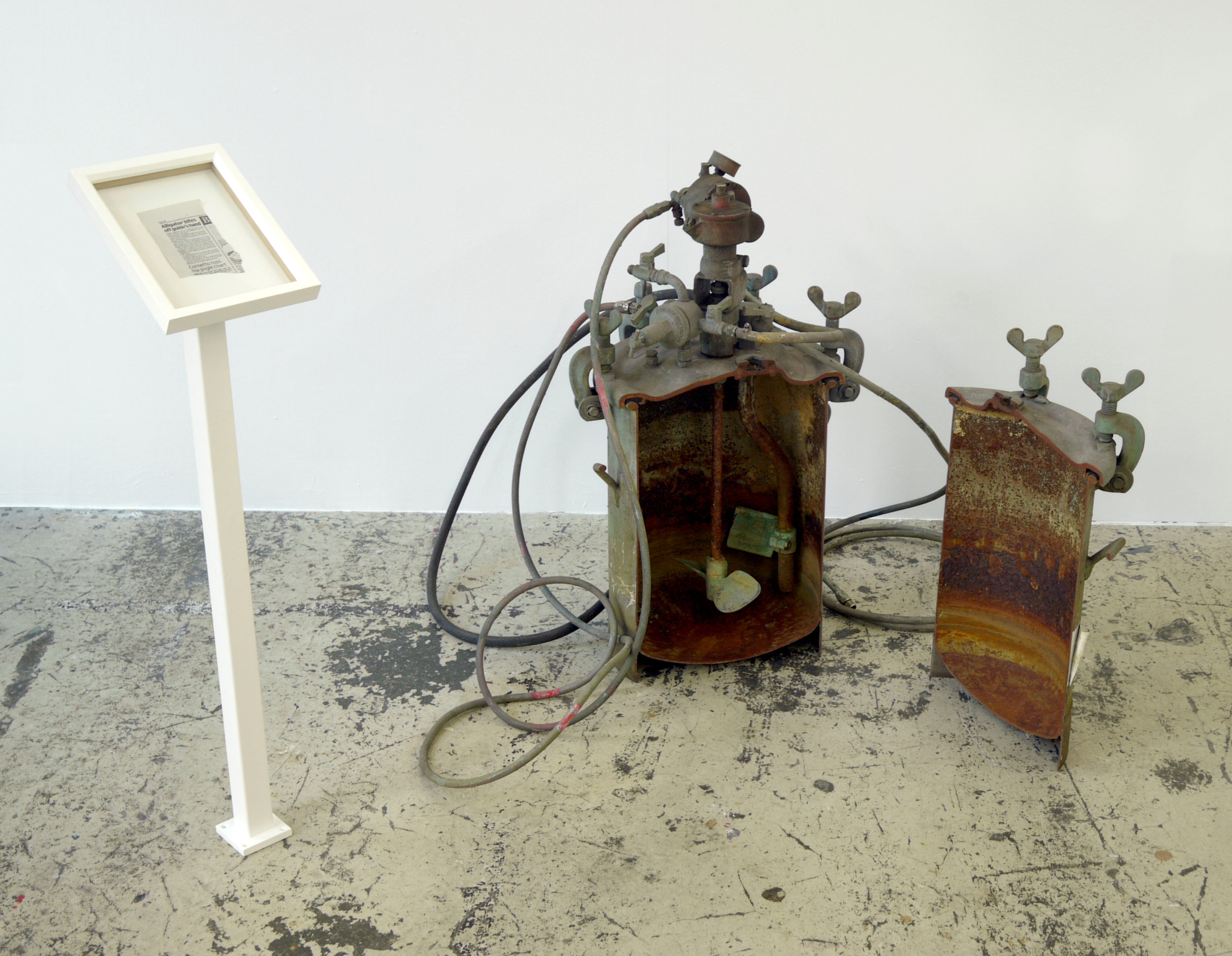
paint mix machine, framed newspaper clipping on pole
Park-Life, 2012
For his installation Park-Life, Beckett groups together rusty objets trouvés, all painted green − doors, drawers, and scales − as sculptures. They look like remains from an industrial past or items from a cabinet of curiosities. These “found objects” are accompanied by information panels that recall those in museums of natural history or sculpture gardens.
However, instead of giving information about the exhibits, the panels link them to bizarre stories in the news. These items from the sensationalist Yellow Press carry tales of fateful accidents and mysterious crimes that cast the relationship between nature and death in an ominous light. One report, for instance, describes an accident in which a girl is killed by a falling branch while sitting on a park bench. Taking a second look at the sculpture, the viewer has the brief impression that the shattered object embodies the accident. Although there is no logical connection between object and text, they appear to attract each other magnetically and to fill each other with significance. As a result, you find yourself looking at the sculpture differently and speculating about what it might mean.
In Park-Life, Beckett focuses on our industrial history and most notably on industrial decline. He is interested in what is left, now that the major industries are leaving Europe. This heritage is not always something to be proud of. Beckett experiments with the presentation of his industrial objects, for instance by adding other “found objects.” He also manipulates meanings by adding fictional narratives. In this way, Beckett creates a simulacrum that makes it difficult to distinguish between reality and the illusion of reality generated by the media and visual culture. The objects no longer refer to the history of their use, but have become “referenceless.” By adopting this approach, Beckett presents us with an alternative view of our complex history. At the same time, he explores the way in which museums label and classify their objects.
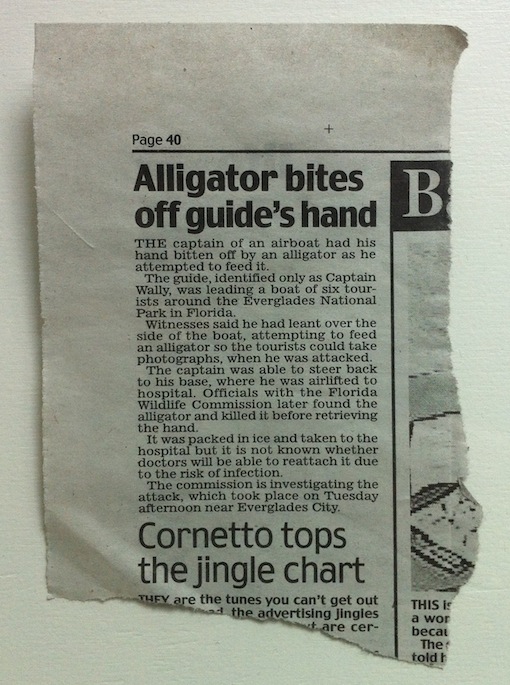
paint mix machine, framed newspaper clipping on pole
detail of article
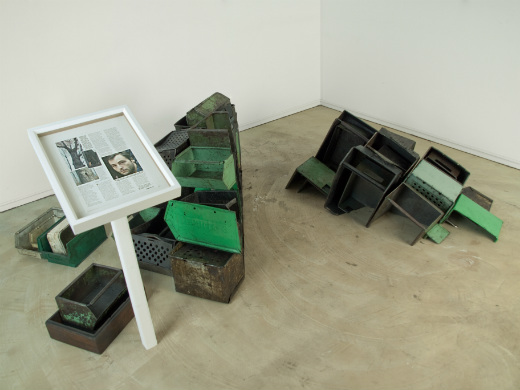
Workshop storage boxes, framed magazine article on pole
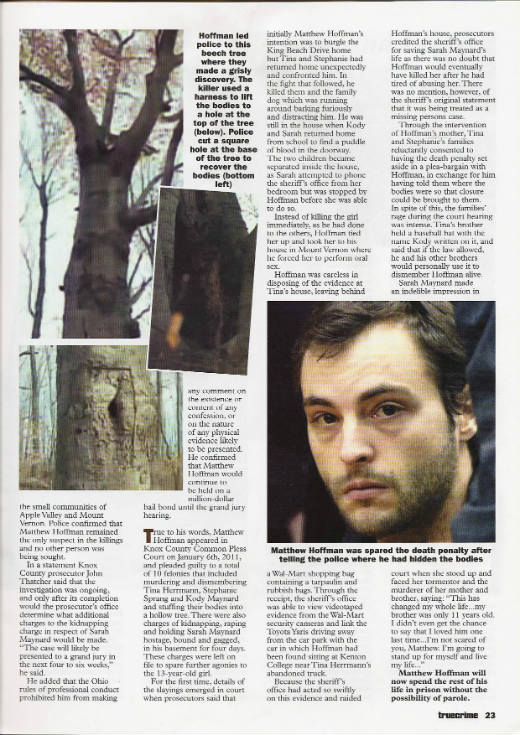
Workshop storage boxes, framed magazine article on pole
detail of article
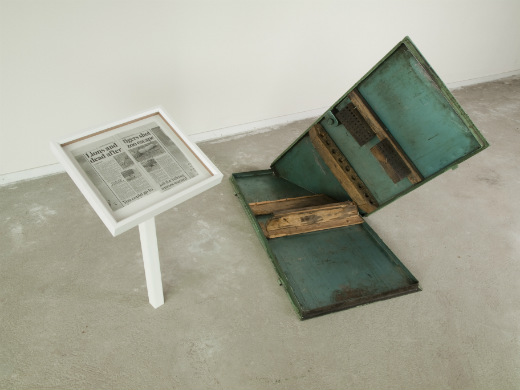
Workshop cupboard doors, framed newspaper clipping on pole
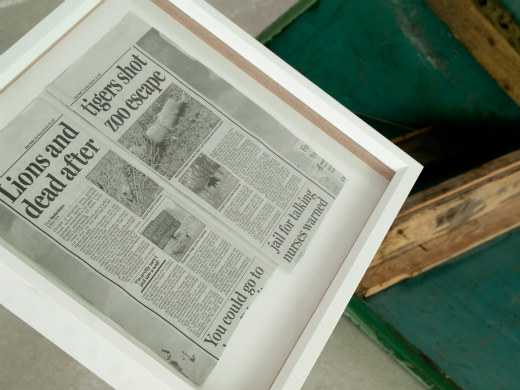
Workshop cupboard doors, framed newspaper clipping on pole
detail of newspaper clipping
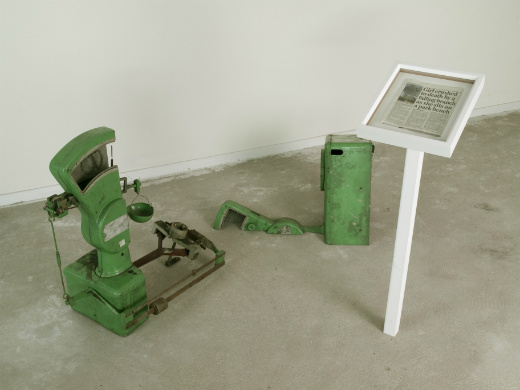
Weighing scale, framed newspaper clipping on pole.
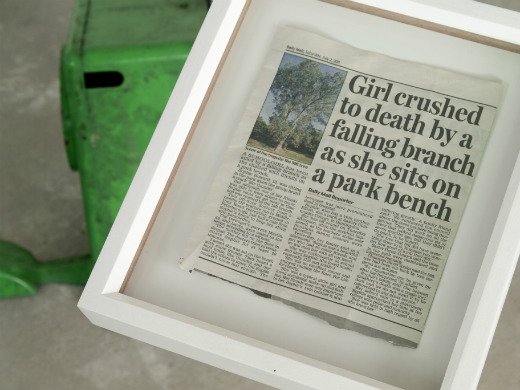
Weighing scale, framed newspaper clipping on pole
detail of newspaper clipping

